Embark on a travel experience that will stay with you forever. We offer a blend of culture, adventure, and tranquility, ensuring every moment is filled with wonder. Whether you’re seeking thrill or relaxation, we create journeys that are truly unforgettable.
THE JOURNEY BEGINS
Arrive in Corner Brook in Newfoundland, Canada’s most easterly province and also known as “The Rock”. The town of Corner Brook is located on the west side of the island and is renowned for its world-famous salmon-bearing river, the Humber. This evening your Tour Leader will join you for an pre-tour briefing and you will meet your fellow travellers at dinnertime. **Please Note** You will arrive at Deer Lake Airport which is 45-minutes away from CornerBrook. A transfer has been arranged and will meet you outside the airport, at arrivals, with an Anderson Vacations sign. Please note the transfer could be shared with fellow tour passengers based on the flight schedule. ** Meet your Tour leader in the hotel lobby by 4 PM for a meet & greet and welcome dinner **
Today we explore the incredible Gros Morne National Park, with its towering inland fjords and walking trails. We will learn about the geology of the area at the Gros Morne Visitor Centre and experience it firsthand with a scenic walk through the Tablelands area discovering the unique flora and fauna native to the region. Moose, caribou, waterfalls, and dozens of unforgettable photographic scenes add to this UNESCO World Heritage Destination. Next, we will enjoy a boat cruise of Bonne Bay and participate in an age-old tradition – the “Screech In” ceremony, featuring live traditional music, a cod fish, and a taste of the famous Newfoundland Screech. Following the boat cruise, we continue up the Northern Peninsula of Newfoundland to the town of Cow Head. With a photo stop to visit the Lobster Cove Lighthouse just outside Rocky Harbour.
This morning, we travel the well-known Viking Trail Route to the most northerly tip of Newfoundland, to the L’Anse aux Meadows National Historic Site. We will see where the Vikings, the first Europeans to reach the New World, landed and established a settlement. We visit the interpretive centre, tour the Viking ruins, and have an interactive experience at the longhouse to discover what life was like for the Viking encampment in 1,000 AD. As we make our way onwards to St. Anthony, at the centre of the Northern Peninsula, we tour the town and make our way up to the St. Anthony Lighthouse. Look down at the crashing waves below the shoreline and take in the view of the town. The evening is at leisure.
Today we get a closer look at some of the earliest settlements in Canada. We ferry across the Strait of Belle Isle, known as Iceberg Alley, to the fishing village where Jacques Cartier first landed at Blanc Sablon, Quebec. We finish our day back down in L’Anse au Clair, population 264, located 3 km from the Quebec/Labrador border in the Labrador Straits. This was the first established by French fishing interests in the early 1700s; the first permanent settlers were Jersey fishermen. Shortly after the Quebec-Labrador border dispute in 1825, Newfoundlanders and people from the south of England also began settling in L’Anse au Clair. The original name of the community was Anse St. Clair named after one of the first merchants to establish here whose last name was St. Clair. Skies are favourable this evening, you may see the Northern Lights.
This morning, we travel to Red Bay, Labrador, a community where one of the earliest industrial complexes in the New World – a Basque whaling station, which we visit (Right whale exhibit museum) – has been declared a National Historic Site. Archaeologists have discovered several shipwrecks from the period of 1550-1600 when this was the world whaling capital, supplying Europe with oil for lamps and soap. Archaeologists have also uncovered an astounding number of tools and personal effects that confirm European habitation of this coast during the 16th and 17th centuries. Many of these are now conserved in the Interpretation Centre. This is part of Labrador’s famous Coastal Drive Route; modern-day explorers find a wildland dotted with a few coastal settlements inhabited mainly by the descendants of fishermen who began to settle here 200 years ago. Next, visit the UNESCO heritage site of Red Bay. During the mid-16th century, large numbers of right and bowhead whales drew whalers from the Basque region of Spain and France to the Strait of Belle Isle, where they established a major whaling port at Red Bay. For some 70 years, Basque whalers made the dangerous, month-long journey across the Atlantic to hunt whales and produce the oil that lit the lamps of Europe. This afternoon, before catching the ferry back, we hope to visit the Gateway to Labrador Visitor Centre. Then we will take the ferry back across to Newfoundland and continue to Rocky Harbour, located on the west coast in the heart of Gros Morne National Park. Finds of arrowheads in the area indicate that the Micmac once inhabited the area. The second largest National Park in eastern Canada, Gros Morne is a UNESCO World Heritage Site stretching across 1805 square kilometres of western Newfoundland as part of the towering Long-Range Mountains. Encircled by tiny seaside communities, and encompassing forests, freshwater fjords, bogs, barren lowlands, moose, and striking cliffs and shorelines, this area is also world-renowned for its complex geology. After check-in, we will enjoy a group dinner and then an evening with traditional Newfoundland Music.
Making our way along the Viking Trail Route and we will have plenty of scenic stops along the way, with informative talks from our Tour Leader throughout our journey. Then, we visit the Iceberg Alley and the historic town of Twillingate. At the Prime Berth Fishery and Heritage Centre, an interpretive fishing centre, we learn about the history of the all-important fishing industry in Newfoundland, and how the industry has changed over the years. This afternoon is spent exploring the area with a tour taking in the history of Twillingate and the surrounding areas. We stop and visit Long Point Lighthouse, which sits more than 300 feet above the sea and is still operated by one lighthouse keeper year-round guiding ships through the fog and the stormy nights. After check-in, we will enjoy a group dinner.
Gander is a town full of history and plays a vital role in the international aviation industry. Gander is also the setting for the now famous musical ‘Come from Away’ showcasing the story of how the friendly town handled the sudden arrival of 38 plane loads totalling 7000 passengers who landed here following the September 11th terrorist attacks in the US. We visit the North Atlantic Aviation Museum this morning and learn about the important historical events that have made this town an inspiration to all Canadians. From Gander, we take a scenic drive through Terra Nova National Park, Canada’s most easterly national park, where the boreal forest meets the rugged Atlantic coastline. A visit to the Terra Nova Marine Interpretation Centre will inform us about North Atlantic marine creatures and the importance of local conservation efforts. This afternoon, two of Newfoundland's most famous outports, began with the site of John Cabot's arrival. We drive to Cape Bonavista, where Cabot is believed to have first sighted the New World on June 24, 1497. We will visit the Matthew and Bonavista Light House. The rest of the evening will be at leisure.
This early morning back down the rugged Bonavista Peninsula is Trinity, who was named by the Portuguese explorer Gaspar Corte Real when he sailed into the harbour on Trinity Sunday, 1500. We stroll Trinity's narrow, tree-lined streets, enjoying the beautifully preserved historic buildings. We travel to the village of Fortune, the departure point for our afternoon ferry to the French islands of Saint-Pierre and Miquelon (bring your passports!). These are two groups of islands with a fascinating maritime history (and their own time zone); they make up a part of France off the coast of Newfoundland. Although many people in North America believe those islands are part of Canada or some type of autonomous region, the islands are an integral part of the French Republic. During our time in Saint-Pierre, we will have a city/island tour. The "Place du General de Gaulle" on the waterfront, is the heart of the town. It is the unavoidable square to mingle and tap into the "ambience". The "Zaspiak Bat" or basque playing wall, the "Pointe aux canons" lighthouse, the salt houses, the "Pointe du Diamant" and the last not least the "Arche" museum, are all must-see spots embodying the islands' identity.
This morning, we take a short ferry to Sailor’s Island where you will enjoy a walking tour of Ile aux Marins, one of the eight islands in the Saint-Pierre Miquelon archipelago. It’s an island preserved the way it was back in the late 19th and early 20th centuries when traditional fishermen lived there before modern technology rendered them obsolete. We transfer back to St-Pierre in the evening for dinner.
Today we ferry back to the mainland and continue by road to St John’s. This is a full (and scenic) day of travel with breaks for refreshments/lunch along the way. We aim to be in St John’s in the late afternoon. St. John’s is the perfect combination of big-city luxury and traditional small-town charm. It is one of the oldest and most easterly cities in North America and has become a rare destination full of character and charisma, with a contemporary, sophisticated edge. The town is quite walkable, with lots of great shopping, restaurants, historical sites and more.
Today is a full day of local touring as we explore North America’s oldest city. We visit Canada’s second largest National Historic Park as well as Signal Hill and Cape Spear, home to the oldest lighthouse and the most easterly point in North America. This afternoon, we enjoy a coastal cruise with opportunities to see whales and puffins at the Witless Bay Ecological Reserve. Following that, we will immerse ourselves in the traditions of Newfoundland and Labrador’s largest public cultural space, The Rooms, showcasing the history, heritage and artistic expression of this unique province. This evening’s farewell dinner will celebrate the amazing time we have spent together. This is the time to exchange stories, memories and the highlights of our time spent along the East Coast of Canada.
Our Newfoundland adventure comes to an end. Following breakfast, you will transfer to the airport on your own, for your return flight home.
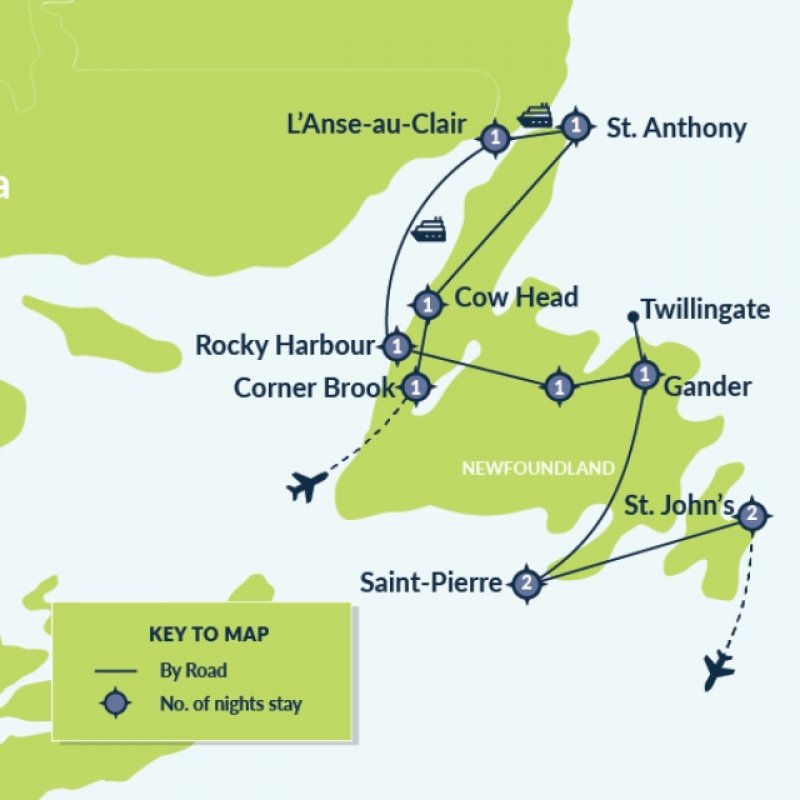

OUR KEY TO EARNING TRUST IS
If you still have questions or need more information, feel free to ask! Simply fill out the form below, and our team will get back to you with the answers you need
Ask A Questionor
YOU CAN CALL US ATEmbark on a travel experience that will stay with you forever. We offer a blend of culture, adventure, and tranquility, ensuring every moment is filled with wonder. Whether you’re seeking thrill or relaxation, we create journeys that are truly unforgettable.
THE JOURNEY BEGINS
Arrive in Corner Brook in Newfoundland, Canada’s most easterly province and also known as “The Rock”. The town of Corner Brook is located on the west side of the island and is renowned for its world-famous salmon-bearing river, the Humber. This evening your Tour Leader will join you for an pre-tour briefing and you will meet your fellow travellers at dinnertime. **Please Note** You will arrive at Deer Lake Airport which is 45-minutes away from CornerBrook. A transfer has been arranged and will meet you outside the airport, at arrivals, with an Anderson Vacations sign. Please note the transfer could be shared with fellow tour passengers based on the flight schedule. ** Meet your Tour leader in the hotel lobby by 4 PM for a meet & greet and welcome dinner **
Today we explore the incredible Gros Morne National Park, with its towering inland fjords and walking trails. We will learn about the geology of the area at the Gros Morne Visitor Centre and experience it firsthand with a scenic walk through the Tablelands area discovering the unique flora and fauna native to the region. Moose, caribou, waterfalls, and dozens of unforgettable photographic scenes add to this UNESCO World Heritage Destination. Next, we will enjoy a boat cruise of Bonne Bay and participate in an age-old tradition – the “Screech In” ceremony, featuring live traditional music, a cod fish, and a taste of the famous Newfoundland Screech. Following the boat cruise, we continue up the Northern Peninsula of Newfoundland to the town of Cow Head. With a photo stop to visit the Lobster Cove Lighthouse just outside Rocky Harbour.
This morning, we travel the well-known Viking Trail Route to the most northerly tip of Newfoundland, to the L’Anse aux Meadows National Historic Site. We will see where the Vikings, the first Europeans to reach the New World, landed and established a settlement. We visit the interpretive centre, tour the Viking ruins, and have an interactive experience at the longhouse to discover what life was like for the Viking encampment in 1,000 AD. As we make our way onwards to St. Anthony, at the centre of the Northern Peninsula, we tour the town and make our way up to the St. Anthony Lighthouse. Look down at the crashing waves below the shoreline and take in the view of the town. The evening is at leisure.
Today we get a closer look at some of the earliest settlements in Canada. We ferry across the Strait of Belle Isle, known as Iceberg Alley, to the fishing village where Jacques Cartier first landed at Blanc Sablon, Quebec. We finish our day back down in L’Anse au Clair, population 264, located 3 km from the Quebec/Labrador border in the Labrador Straits. This was the first established by French fishing interests in the early 1700s; the first permanent settlers were Jersey fishermen. Shortly after the Quebec-Labrador border dispute in 1825, Newfoundlanders and people from the south of England also began settling in L’Anse au Clair. The original name of the community was Anse St. Clair named after one of the first merchants to establish here whose last name was St. Clair. Skies are favourable this evening, you may see the Northern Lights.
This morning, we travel to Red Bay, Labrador, a community where one of the earliest industrial complexes in the New World – a Basque whaling station, which we visit (Right whale exhibit museum) – has been declared a National Historic Site. Archaeologists have discovered several shipwrecks from the period of 1550-1600 when this was the world whaling capital, supplying Europe with oil for lamps and soap. Archaeologists have also uncovered an astounding number of tools and personal effects that confirm European habitation of this coast during the 16th and 17th centuries. Many of these are now conserved in the Interpretation Centre. This is part of Labrador’s famous Coastal Drive Route; modern-day explorers find a wildland dotted with a few coastal settlements inhabited mainly by the descendants of fishermen who began to settle here 200 years ago. Next, visit the UNESCO heritage site of Red Bay. During the mid-16th century, large numbers of right and bowhead whales drew whalers from the Basque region of Spain and France to the Strait of Belle Isle, where they established a major whaling port at Red Bay. For some 70 years, Basque whalers made the dangerous, month-long journey across the Atlantic to hunt whales and produce the oil that lit the lamps of Europe. This afternoon, before catching the ferry back, we hope to visit the Gateway to Labrador Visitor Centre. Then we will take the ferry back across to Newfoundland and continue to Rocky Harbour, located on the west coast in the heart of Gros Morne National Park. Finds of arrowheads in the area indicate that the Micmac once inhabited the area. The second largest National Park in eastern Canada, Gros Morne is a UNESCO World Heritage Site stretching across 1805 square kilometres of western Newfoundland as part of the towering Long-Range Mountains. Encircled by tiny seaside communities, and encompassing forests, freshwater fjords, bogs, barren lowlands, moose, and striking cliffs and shorelines, this area is also world-renowned for its complex geology. After check-in, we will enjoy a group dinner and then an evening with traditional Newfoundland Music.
Making our way along the Viking Trail Route and we will have plenty of scenic stops along the way, with informative talks from our Tour Leader throughout our journey. Then, we visit the Iceberg Alley and the historic town of Twillingate. At the Prime Berth Fishery and Heritage Centre, an interpretive fishing centre, we learn about the history of the all-important fishing industry in Newfoundland, and how the industry has changed over the years. This afternoon is spent exploring the area with a tour taking in the history of Twillingate and the surrounding areas. We stop and visit Long Point Lighthouse, which sits more than 300 feet above the sea and is still operated by one lighthouse keeper year-round guiding ships through the fog and the stormy nights. After check-in, we will enjoy a group dinner.
Gander is a town full of history and plays a vital role in the international aviation industry. Gander is also the setting for the now famous musical ‘Come from Away’ showcasing the story of how the friendly town handled the sudden arrival of 38 plane loads totalling 7000 passengers who landed here following the September 11th terrorist attacks in the US. We visit the North Atlantic Aviation Museum this morning and learn about the important historical events that have made this town an inspiration to all Canadians. From Gander, we take a scenic drive through Terra Nova National Park, Canada’s most easterly national park, where the boreal forest meets the rugged Atlantic coastline. A visit to the Terra Nova Marine Interpretation Centre will inform us about North Atlantic marine creatures and the importance of local conservation efforts. This afternoon, two of Newfoundland's most famous outports, began with the site of John Cabot's arrival. We drive to Cape Bonavista, where Cabot is believed to have first sighted the New World on June 24, 1497. We will visit the Matthew and Bonavista Light House. The rest of the evening will be at leisure.
This early morning back down the rugged Bonavista Peninsula is Trinity, who was named by the Portuguese explorer Gaspar Corte Real when he sailed into the harbour on Trinity Sunday, 1500. We stroll Trinity's narrow, tree-lined streets, enjoying the beautifully preserved historic buildings. We travel to the village of Fortune, the departure point for our afternoon ferry to the French islands of Saint-Pierre and Miquelon (bring your passports!). These are two groups of islands with a fascinating maritime history (and their own time zone); they make up a part of France off the coast of Newfoundland. Although many people in North America believe those islands are part of Canada or some type of autonomous region, the islands are an integral part of the French Republic. During our time in Saint-Pierre, we will have a city/island tour. The "Place du General de Gaulle" on the waterfront, is the heart of the town. It is the unavoidable square to mingle and tap into the "ambience". The "Zaspiak Bat" or basque playing wall, the "Pointe aux canons" lighthouse, the salt houses, the "Pointe du Diamant" and the last not least the "Arche" museum, are all must-see spots embodying the islands' identity.
This morning, we take a short ferry to Sailor’s Island where you will enjoy a walking tour of Ile aux Marins, one of the eight islands in the Saint-Pierre Miquelon archipelago. It’s an island preserved the way it was back in the late 19th and early 20th centuries when traditional fishermen lived there before modern technology rendered them obsolete. We transfer back to St-Pierre in the evening for dinner.
Today we ferry back to the mainland and continue by road to St John’s. This is a full (and scenic) day of travel with breaks for refreshments/lunch along the way. We aim to be in St John’s in the late afternoon. St. John’s is the perfect combination of big-city luxury and traditional small-town charm. It is one of the oldest and most easterly cities in North America and has become a rare destination full of character and charisma, with a contemporary, sophisticated edge. The town is quite walkable, with lots of great shopping, restaurants, historical sites and more.
Today is a full day of local touring as we explore North America’s oldest city. We visit Canada’s second largest National Historic Park as well as Signal Hill and Cape Spear, home to the oldest lighthouse and the most easterly point in North America. This afternoon, we enjoy a coastal cruise with opportunities to see whales and puffins at the Witless Bay Ecological Reserve. Following that, we will immerse ourselves in the traditions of Newfoundland and Labrador’s largest public cultural space, The Rooms, showcasing the history, heritage and artistic expression of this unique province. This evening’s farewell dinner will celebrate the amazing time we have spent together. This is the time to exchange stories, memories and the highlights of our time spent along the East Coast of Canada.
Our Newfoundland adventure comes to an end. Following breakfast, you will transfer to the airport on your own, for your return flight home.


OUR KEY TO EARNING TRUST IS
Get Full Itinerary with all includes and exclusions
If you still have questions or need more information, feel free to ask! Simply fill out the form below, and our team will get back to you with the answers you need
Ask A Questionor
YOU CAN CALL US AT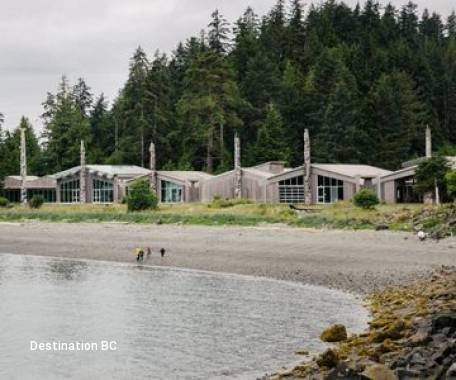
8 Days
HAGW Tour Code:

 Jun, Jul, Aug, Sep
Jun, Jul, Aug, Sep
Haida Gwaii, Prince Rupert
BestSeller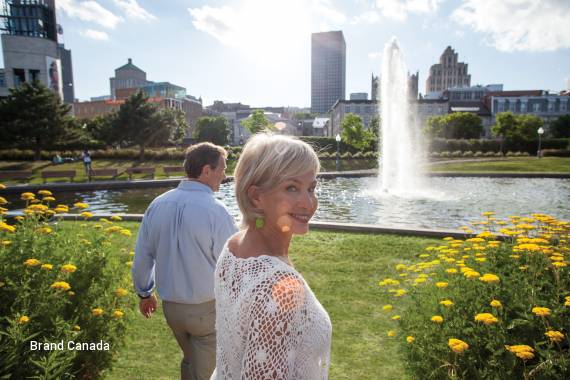
18 Days
18WTE Tour Code:

 May, Jun, Jul, Aug, Sep
May, Jun, Jul, Aug, Sep
Halifax, Jasper, Montréal, Ottawa, Québec City
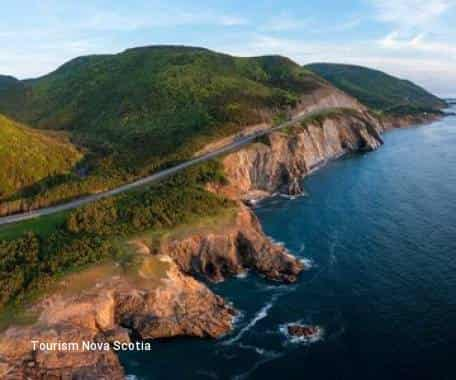
13 Days
MMES Tour Code:

 Jul, Aug
Jul, Aug
Baddeck, Charlottetown, Fredericton, Halifax, Moncton, Saint John, NB, St. Andrews by-the-Sea, Western Shore
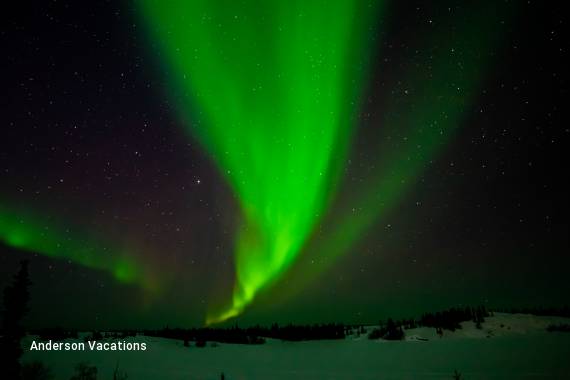
5 Days
YABV Tour Code:

 Jan, Mar
Jan, Mar
Yellowknife
BestSeller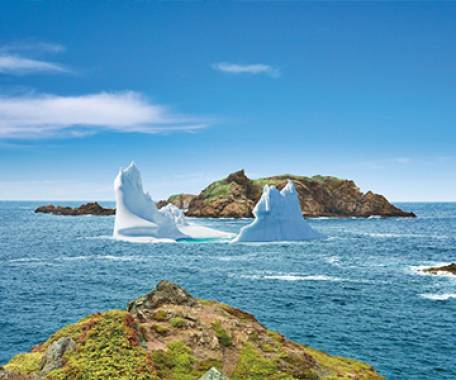
9 Days
NFLD Tour Code:

 Sep
Sep
Clarenville, Corner Brook, Cow Head, Gander, St. Anthony, St. John's, NL
BestSeller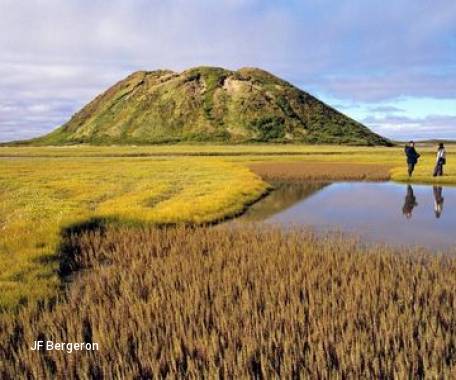
9 Days
ILRA Tour Code:

 Jun, Jul, Sep
Jun, Jul, Sep
Dawson City, Inuvik, Whitehorse
BestSeller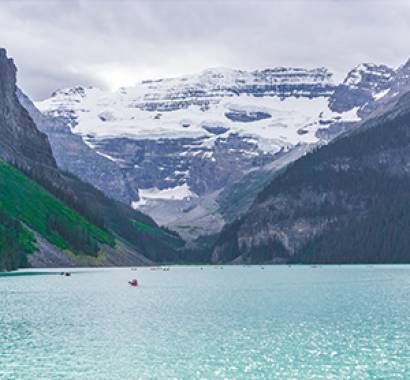
12 Days
12RO Tour Code:

 May, Jun, Jul, Aug, Sep, Oct
May, Jun, Jul, Aug, Sep, Oct
Banff, Jasper, Kamloops, Lake Louise, Port Hardy, Prince George, Prince Rupert, Victoria, BC
Expert Guidance at Your Fingertips
As a responsible tour operator, we believe in creating experiences that not only enrich your life but also contribute to the well-being of our planet and its communities. That’s why we will be planting one tree for every passenger that travels with us.

